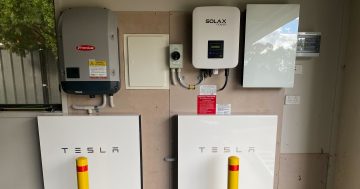Numerous groups are emailing in a media release calling for protest on Tuesday (the winter solstice geddit?) to get Canberra’s retail solar industry kickstarted again after Simon Corbell took an axe to it on 1 June:
ACT households are no longer able to access ANY incentives to encourage them to install roof top solar power.
The immediate result of this announcement has been the disappearance of this fledgling industry in the ACT, with the solar industry forced to lay off staff, with more to go in the coming weeks, if possible positive changes are not made to the scheme to maintain its accessibility to ACT householders going forward.
A group of ACT based solar companies have met with Government , Greens & Liberal MLA’s to voice concerns about the dire situation and be part of workable solution that builds a sustainable local renewable energy industry.
To reinforce this, ACT solar businesses are leading a Rally for Solar on the Winter Solstice next Tuesday as a call for action for the ACT Assembly to work towards a win:win:win solution to this legislatively-created problem.
Akora Energy, Envirofriendly, Pure Solar, Pyramid Power, Solargain, Solartec and Solarshop Australia are leading the charge down to the Legislative Assembly on Tuesday morning.











